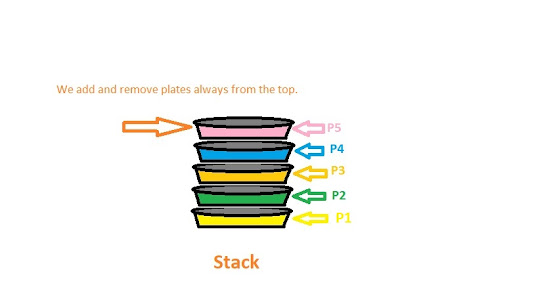Tree Data Structure
Tree
Definition:
A tree is a widely used data structure in computer science. It is a hierarchical structure that consists of nodes, where each node can have one or more child nodes. In C++, a tree can be implemented using classes, objects, and pointers.
Binary Tree:
One of the most common types of trees is the binary tree, where each node has at most two child nodes. In C++, a binary tree can be represented by a class that has a left and right pointer to represent its child nodes, and a data variable to store the node's value.
Here is an example of a binary tree class in C++:
class BinaryTree {
public:
int data;
BinaryTree* left;
BinaryTree* right;
};
Explanation:
This class contains three variables: data, left, and right. The data variable stores the value of the node, and the left and right pointers point to the left and right child nodes respectively. A new node can be created by creating an object of the BinaryTree class and assigning values to its data, left, and right pointers.
One of the most important operations on a binary tree is traversal. Traversing a binary tree means visiting all the nodes in the tree in a specific order. The three most common types of traversal are in-order, pre-order, and post-order.
In-order Traversal:
In-order traversal visits the left subtree, the root node, and then the right subtree. In C++, this can be implemented using a recursive function that first calls itself with the left child, then visits the root node, and then calls itself with the right child.
Here is an example of in-order traversal in C++:
void inOrder(BinaryTree* root) {
if (root != nullptr) {
inOrder(root->left);
cout << root->data << endl;
inOrder(root->right);
}
}
Pre-order Traversal:
Pre-order traversal visits the root node, the left subtree, and then the right subtree. In C++, this can be implemented using a recursive function that first visits the root node, then calls itself with the left child, and then calls itself with the right child.
Here is an example of pre-order traversal in C++:
void preOrder(BinaryTree* root) {
if (root != nullptr) {
cout << root->data << endl;
preOrder(root->left);
preOrder(root->right);
}
}
Post-order Traversal:
Post-order traversal visits the left subtree, the right subtree, and then the root node. In C++, this can be implemented using a recursive function that first calls itself with the left child, then calls itself with the right child, and then visits the root node.
Here is an example of post-order traversal in C++:
void postOrder(BinaryTree* root) {
if (root != nullptr) {
postOrder(root->left);
postOrder(root->right);
cout << root->data << endl;
}
}
Searching:
Another important operation on a binary tree is searching. Searching for a specific value in a binary tree can be implemented using a recursive function that compares the value of the current node to the value being searched for. If the current node's value is equal to the value being searched for, the search is successful. If the current node 's value is greater than the value being searched for, the search function is called on the left child. If the current node's value is less than the value being searched for, the search function is called on the right child.
Here is an example of a search function in C++:
BinaryTree* search(BinaryTree* root, int value) {
if (root == nullptr || root->data == value) {
return root;
}
if (root->data > value) {
return search(root->left, value);
}
else {
return search(root->right, value);
}
}
Explanation:
Insertion and deletion are also important operations on a binary tree. Insertion can be implemented by first searching for the appropriate location to insert the new node, and then creating a new node and linking it to the parent node. Deletion can be more complex, as it involves re-arranging the tree to maintain its balance. One common method for deletion is called "swapping with inorder successor", which involves swapping the value of the node to be deleted with the value of its inorder successor, and then deleting the inorder successor.
In addition to binary trees, there are also other types of trees such as AVL trees, B-trees, and Trie trees. AVL trees are a type of self-balancing binary search tree, where the difference in height between the left and right subtrees of any node is at most one. B-trees are a type of tree that is commonly used in databases and file systems, where each node can have a large number of child nodes. Trie trees, also known as prefix trees, are a type of tree that is used for efficient string matching and prefix searching.
Conclusion:
In conclusion, trees are an important data structure in computer science, and are widely used in various applications such as databases, file systems, and algorithms. In C++, trees can be implemented using classes, objects, and pointers, and various operations such as traversal, searching, insertion, and deletion can be implemented using recursive functions. By understanding the concepts of trees and how to implement them in C++, one can develop more efficient and optimized programs.

Comments
Post a Comment
Feel free to comment or ask something related to games.